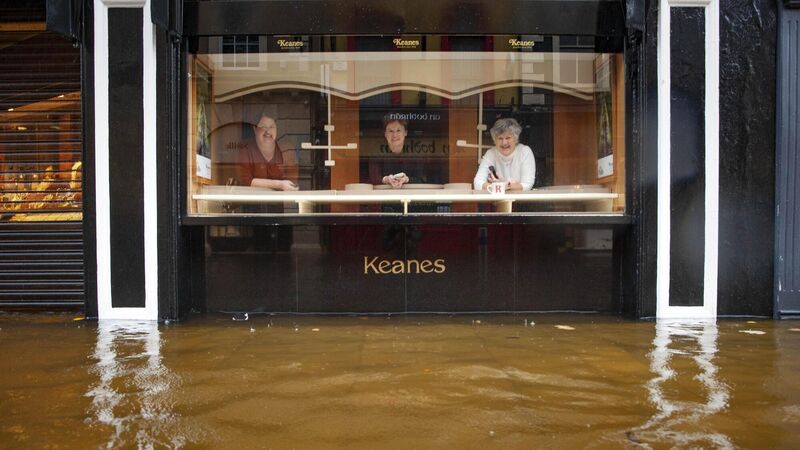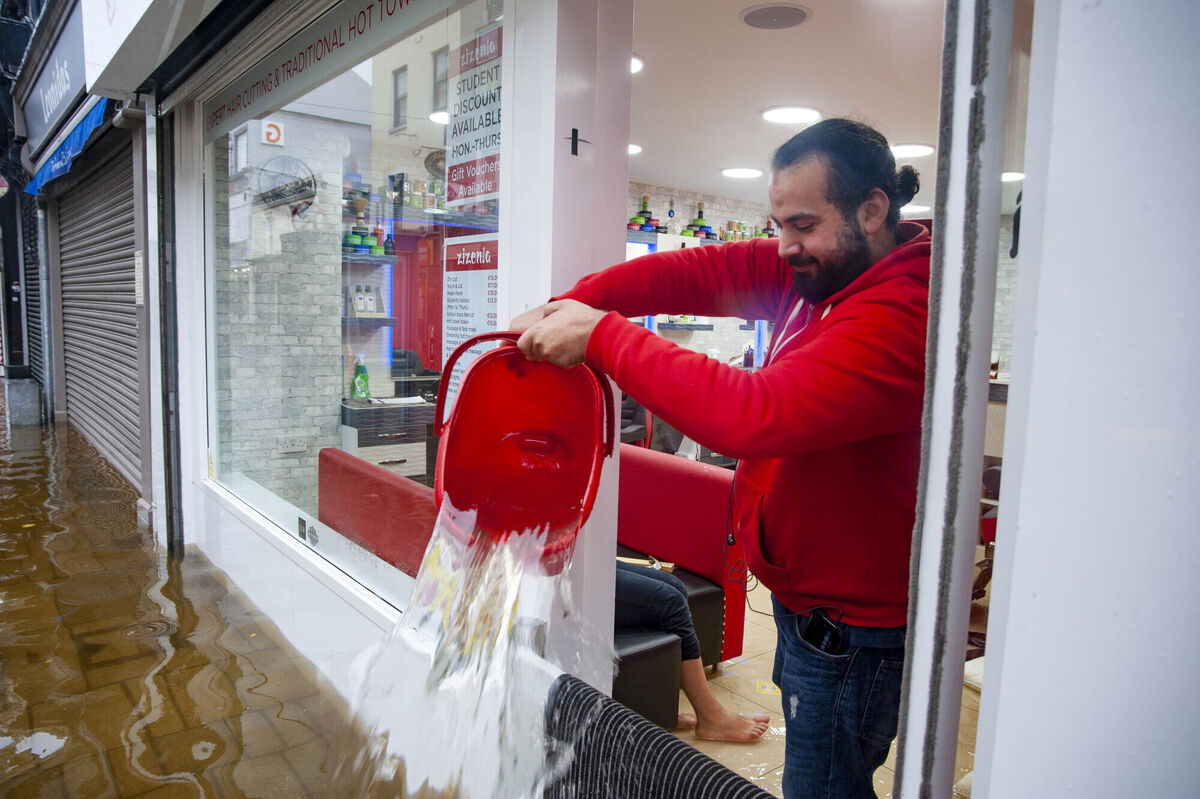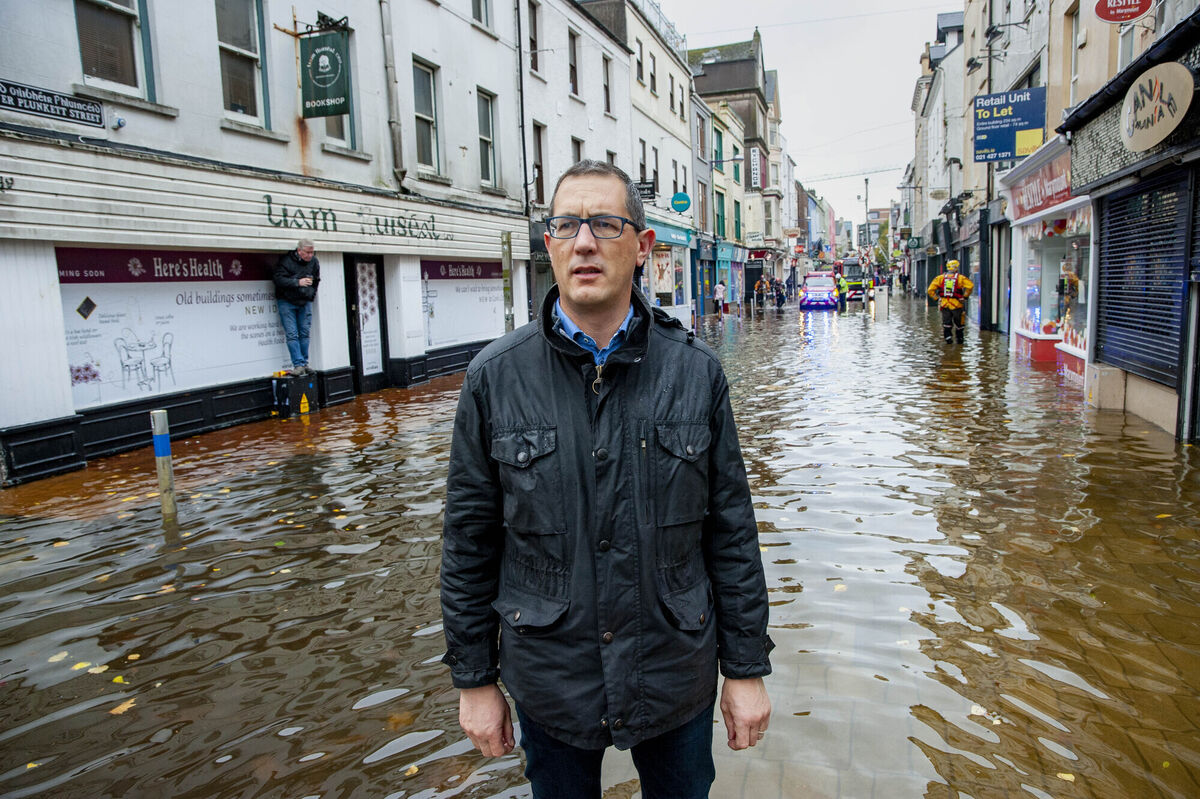Eoin English: Flooded traders are tired, frustrated, fearful

Staff members from Keanes Jewellers pictured during heavy flooding on Oliver Plunkett street, Cork city.
They’re a resilient bunch, the proud traders of Cork’s , but this one has hit them hard.
Another winter, another tidal flood event, and yet another debate about how best to protect Ireland’s second city from tidal flooding.
After the most recent floods of 2009, 2012, and 2014, the affected traders have mopped-up, cleaned-up, picked-up the pieces, and faced the world, ready to trade again. But not this time.
For many, what was supposed to be their last trading day before the Level 5 restrictions kick-in was spent sweeping dirty, stinking floodwaters from their premises and assessing the damage, again.
When the clean-up was done, many simply pulled down their shutters for the next six weeks.
Tired, anxious, frustrated, and fearful after seven months of trying to live and trade through Covid-19, you could see the exhaustion in their faces.
They are tired. Tired of trying to cope with Covid-19, tired of repeated flood events, tired of waiting for a solution.

As the water receded, calls for a tidal barrier rose again as part of a wider debate about how best to protect Cork city from the twin threats of tidal flooding from the east, and river, or fluvial flooding from the west.
The Office of Public Works () insists that its €150m flood defence plan - the Lower Lee flood relief scheme which has been in planning for 14-years - is the best approach, with a blend of direct defences in places, most of which will be knee-height, demountable barriers and a network of pumping stations.
Fourteen years in the planning, its delivery will take years and cause disruption.
But the separate Morrison’s Island public realm upgrade, which includes blended flood defences, could be built within 12-months and prevent a repeat of the tidal flooding seen in Cork again yesterday.
Campaign group , passionate about the city’s history and heritage, is opposed to the ’s overall approach and has mounted legal challenges to the Morrison’s Island scheme.
It insists that a tidal barrier at Little Island is the only viable solution to protect the city from flood events, and could be built for a fraction of the €1bn cost estimate advanced by the .
The OPW, which has faced criticism for its heavily engineered flood defence schemes in Bandon and Skibbereen, says a tidal surge barrier is not the ‘silver bullet solution’ as has been suggested.
They say a barrier is unlikely to be needed for over 50 years at least, and that placing it at Little Island would be ecologically damaging, and that the best long-term location for a barrier, should it become necessary, is likely to be at Great Island.
In the meantime, the city centre remains vulnerable to tidal flooding, its viability threatened. The uncertainty and anxiety that causes continues.

After the 2014 flood event, when Oliver Plunkett St was swamped by up to three feet of water, President Michael D Higgins visited those affected and saluted their resilience.
The business owners on nearby Princes St demonstrated that resilience again in recent months, leading the reinvention of the city with their eat on the street initiative making headlines around the world.
As cities try to adapt to the ‘new normal’ and face down the challenges posed by online retailing, it is experiences like this that will attract people to visit cities.
But traders in Cork need certainty.
Before he left the area that day in February 2014, Mr Higgins said the people of Cork deserve the best possible solution in the shortest possible time.
It’s time to deliver.





